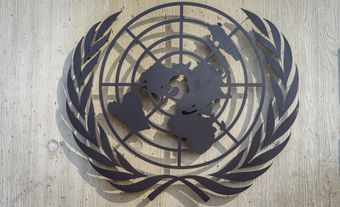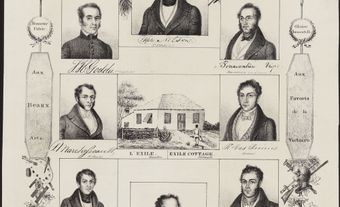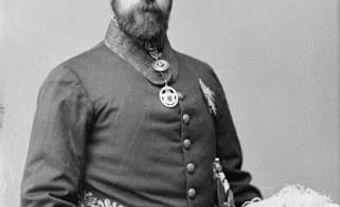This article was originally published in Maclean's Magazine on March 25, 1996
Dunblane Massacre
Dumpy, balding and bespectacled, he did not look like a demonic angel of death. But at mid-morning on March 13, 43-year-old Thomas Watt Hamilton, social misfit and suspected child molester, was about to distract much of the world from its anxiety over the threats to peace in the Taiwan Strait and the Middle East. Shortly after 9:30 a.m. on that wintry Wednesday, he came across snow-covered playing fields towards the primary school in the central Scottish town of Dunblane. He wore ear protectors and a cap pulled down over his forehead and he carried four automatic pistols. When he reached the schoolyard, he fired several shots into the air. Still firing, he barged through the double doors at the entrance, scattering terrified staff, students and teachers, and headed for the gym. There, in just three minutes, he shot and killed 16 five- and six-year-old first-graders and their teacher, Gwenne Mayor, 44. Then he killed himself with a single shot to the head.
Police and ambulance crews from nearby Stirling, summoned by phone, stumbled onto scenes surpassing a horror movie - small bodies in piles around the gym and teachers, covered in blood, trying to help the whimpering wounded. William Wilson, Central Scotland's chief constable, broke down while trying to describe what he saw. Ambulance crew chief John McEwan said the gym offered "a medieval vision of hell." A handgun lay near the assassin's body, McEwan said, "and I had this overwhelming desire to mutilate that corpse." Headmaster Ron Taylor said, "Evil visited us yesterday." Townspeople banked the front of the school with stuffed animals and bouquets bearing messages. "May God take better care of you than this world ever did," said one.
The massacre of the innocents - and the wounding of 12 classmates and two other teachers - stunned Britain and touched off outrage and disbelief overseas. French President Jacques Chirac deplored the atrocity and the Irish parliament observed a moment's silence. British Prime Minister John Major, visiting the shell-shocked community of 7,900 on Friday, spoke of "a horror of almost unimaginable proportions." He said the country's already stringent gun-control law would be re-examined, and his minister responsible for Scotland told the House of Commons that he had ordered a public inquiry. Under the gun law, tightened after deranged gunman Michael Ryan killed 16 people and himself during a rampage through the Berkshire town of Hungerford in 1987, assault weapons and some rifles are illegal. And police will deny a firearms licence to anyone with a criminal record or a history of mental illness.
Despite his erratic behavior and widespread suspicion in the community that he was a pedophile, Hamilton's membership in a Dunblane gun club entitled him to a licence for firearms, which he was authorized to use only on the premises. However, he had been refused entrance to another club after members became suspicious of his character - and evidently for good reason. In the opinion of the people among whom he lived, Hamilton was an angry, paranoid, gun-happy, perverted loner.
He had evidently exhibited those characteristics for some time. In 1974, he was fired as a boy scout worker for what the movement called "unstable and possibly improper behavior following a scout camp." In the 1980s, he began opening clubs for boys, some of whom later said he touched them suggestively, took their pictures and made them run around in their underwear. When police broke down the door of his home on Kent Road in Stirling, they found a huge collection of photos of boys clad only in shorts or bathing suits.
That discovery confirmed the worst fears of the community. Dunblane resident William McInnes said there had been persistent rumors that Hamilton was sexually perverted. "We always told the boys that they should never be last in the shower," he said. McInnes's 15-year-old son Stuart, who quit a club four years ago, recalled that Hamilton made them strip to the waist "and stick our chests out. Then he'd just look at us." Cathleen Kerr, the killer's 71-year-old neighbor, said he was "very creepy because he would look straight through you." May Wright, who works in Dunblane's Keep Scotland Beautiful office, thought Hamilton was "a bit of a kook." But to 14-year-old Laura Neilson, "he was evil." In 1992, after stories of his picture-taking had become commonplace, Hamilton closed some of his clubs.
Only hours before he embarked on his murderous assault, Hamilton distributed copies of protest letters he had written over the years to the local council, national politicians, to parents - even to the Queen. The BBC got copies of seven letters the day after the massacre. In his letter to the Queen, written five days earlier, Hamilton complained that the police had falsely accused him of being a sex offender. "As well as my personal distress and loss of public standing, this situation has also resulted in loss of business and ability to earn a living," he wrote. "Indeed, I cannot even walk the streets for fear of embarrassing ridicule."
In 1993, the year after he closed some boys' clubs, Hamilton wrote to Scottish Secretary Michael Forsyth to blame "overzealous police officers ... obsessed with child abuse." That same year, he wrote to parents, urging them to ignore the rumors and send their children to his annual summer camp. "I cannot understand why you have not booked your boy for this annual event which is held for the benefit and enjoyment of children his age."
At week's end, Dunblane's parents spoke of their tragedy and pain and overwhelming sense of loss. Lynne McMaster, pregnant with her sixth child, remembered her daughter Victoria leaving for school: "She said six bye-byes to me as she went down the path waving, looking back and laughing. What am I going to do without her?" Mike North, a professor at Stirling University, became a widower two years ago when his wife died of cancer. His daughter Sophie was among the 16 who died. James Ross lost his five-year-old granddaughter. "I took her to school this morning and later she was dead," he said. In an editorial, Britain's Daily Telegraph commented: "The murder of children is the ultimate test of faith." For the sorrowing people of Dunblane, the test has begun and will not soon be over.
Maclean's March 25, 1996

 Share on Facebook
Share on Facebook Share on X
Share on X Share by Email
Share by Email Share on Google Classroom
Share on Google Classroom


